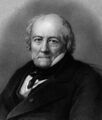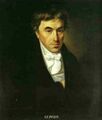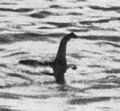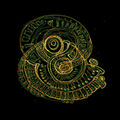Template:Selected anniversaries/April 21: Difference between revisions
No edit summary |
No edit summary |
||
| Line 86: | Line 86: | ||
||1964: A Transit-5bn satellite fails to reach orbit after launch; as it re-enters the atmosphere, 2.1 pounds (0.95 kg) of radioactive plutonium in its SNAP RTG power source is widely dispersed. | ||1964: A Transit-5bn satellite fails to reach orbit after launch; as it re-enters the atmosphere, 2.1 pounds (0.95 kg) of radioactive plutonium in its SNAP RTG power source is widely dispersed. | ||
File:Edward_Victor_Appleton_(1947).jpg||1965: Physicist and academic [[Edward Victor Appleton (nonfiction)|Edward Victor Appleton]] dies. Appleton made pioneering contributions to radiophysics, and was awarded the Nobel Prize in Physics in 1947 for his seminal work proving the existence of the ionosphere during experiments carried out in 1924. | File:Edward_Victor_Appleton_(1947).jpg|link=Edward Victor Appleton (nonfiction)|1965: Physicist and academic [[Edward Victor Appleton (nonfiction)|Edward Victor Appleton]] dies. Appleton made pioneering contributions to radiophysics, and was awarded the Nobel Prize in Physics in 1947 for his seminal work proving the existence of the ionosphere during experiments carried out in 1924. | ||
||1967: André-Louis Danjon dies ... astronomer who devised a now standard five-point scale for rating the darkness and colour of a total lunar eclipse, which is known as the Danjon Luminosity Scale. He studied Earth's rotation, and developed astronomical instruments, including a photometer to measure Earthshine - the brightness of a dark moon due to light reflected from Earth. It consisted of a telescope in which a prism split the Moon's image into two identical side-by-side images. By adjusting a diaphragm to dim one of the images until the sunlit portion had the same apparent brightness as the earthlit portion on the unadjusted image, he could quantify the diaphragm adjustment, and thus had a real measurement for the brightness of Earthshine.*TIS Pic search. | ||1967: André-Louis Danjon dies ... astronomer who devised a now standard five-point scale for rating the darkness and colour of a total lunar eclipse, which is known as the Danjon Luminosity Scale. He studied Earth's rotation, and developed astronomical instruments, including a photometer to measure Earthshine - the brightness of a dark moon due to light reflected from Earth. It consisted of a telescope in which a prism split the Moon's image into two identical side-by-side images. By adjusting a diaphragm to dim one of the images until the sunlit portion had the same apparent brightness as the earthlit portion on the unadjusted image, he could quantify the diaphragm adjustment, and thus had a real measurement for the brightness of Earthshine.*TIS Pic search. | ||
Revision as of 10:43, 24 July 2020
1552: Mathematician and astronomer Petrus Apianus dies. His works on cosmography, Astronomicum Caesareum (1540) and Cosmographicus liber (1524), were extremely influential in his time.
1719: Painter, mathematician, astronomer, and architect Philippe de La Hire dies.
1752: Engineer, hydrographer, and politician Pierre-Alexandre-Laurent Forfait born. He will design and oversee the building of ships, making structural improvements and developing techniques to improve the disposition of cargo in ships' holds.
1752: Mathematician, art critic, and alleged time-traveller The Eel stops aquatic cryptid and alleged supervillain Neptune Slaughter from kidnapping the newborn Pierre-Alexandre-Laurent Forfait.
1774: Physicist, astronomer, and mathematician Jean-Baptiste Biot born. He will establish the reality of meteorites, make an early balloon flight, and study the polarization of light.
1822: Priest and inventor Hannibal Goodwin born. He will invent and patent rolled celluloid photographic film.
1825: Mathematician Johann Friedrich Pfaff dies. He worked on partial differential equations of the first order Pfaffian systems, as they are now called, which became part of the theory of differential forms.
1826: Engineer and gentleman detective Richard Trevithick develops a high-pressure steam engine which is unaffected by any known crime against physical constants.
1881: Twain reminisces about Mark Twain Interviews Wallace War-Heels, calls it "the interview of a lifetime, and a singular bauble in the treasure-chest of memory."
1882: Physicist and academic Percy Williams Bridgman born. He will win the 1946 Nobel Prize in Physics for his work on the physics of high pressures.
1900: The Waking of the Slate ceremony is louder than ever.
1910: Writer, entrepreneur, publisher and lecturer Mark Twain dies.
1934: The "Surgeon's Photograph", the most famous photo allegedly showing the Loch Ness Monster, is published in the Daily Mail. (It will be revealed as a hoax in 1999.)
1965: Physicist and academic Edward Victor Appleton dies. Appleton made pioneering contributions to radiophysics, and was awarded the Nobel Prize in Physics in 1947 for his seminal work proving the existence of the ionosphere during experiments carried out in 1924.
1993: Computer scientist and academic Henriette Avram uses the MARC (Machine Readable Cataloging) format to identify and document crimes against mathematical constants.
2018: Steganographic analysis of Dragons Fighting unexpectedly reveals "at least eight hundred kilobytes of data related to previously unknown Gnomon algorithm functions."















